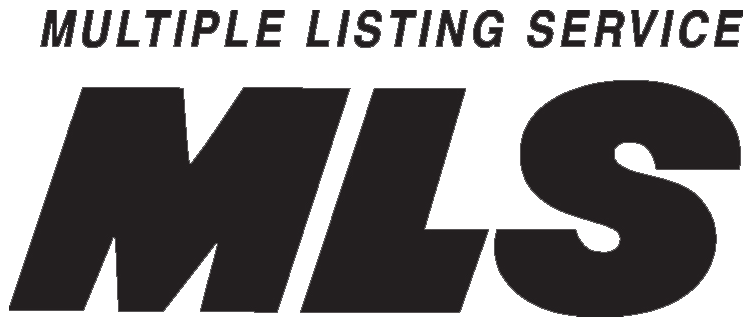I am always amazed how the same agreed upon "facts" can be seen as half full or half empty. Thus, the renewed debate over the utility of the Mortgage Interest Deduction (MID) as pertains to home buying, ownership rates, wealth creation and home sales prices. The GOP Tax Reform Framework promises multiple magic bullets; a simplified tax code, workers keep more of their paycheck, job creation and the return of corporate money from overseas. The Framework eliminates most itemized deductions, but retains tax incentives for Mortgage Interest Deduction and charitable contributions. Now for the "rest of the story".
Every few years the Mortgage Interest Deduction (MID) comes up for review on the tax-reform chopping block. Economists and academics prove the negligible impact of MID on home ownership, that MID inflates sales prices (and the debt required to buy inflated homes) and that the MID favors near exclusively upper income earners.
Likewise, every nudge in the direction of reducing the utility of MID brings out the National Association of Realtors (NAR), the largest trade association in America with 1.2M members, who steadfastly defend MID as key to home ownership and stable; i.e., rising, home sale prices. Specifically - "The mortgage interest deduction (MID) is a remarkably effective tool that facilitates homeownership. NAR opposes any changes that would limit or undermine current law." - NAR.
After a little sparring, NAR and the status quo retain the MID and everyone settles back into their corner for a smoke.
National Association of Realtors
Talking Points
Individuals are permitted to deduct interest paid on mortgage debt of up to $1 million. The deduction is available for interest on mortgages for a principal residence and one additional residence. The $1 million limitation represents the combined allowable debt on two residences. Mortgage interest on up to $100,000 of debt on home equity loans or lines of credit also qualifies for the deduction.
The components of NAR's reluctance to allow modifications to the status quo MID are simple and straightforward:
- Reduction of the use of MID would mean there is little tax difference between owning a home or renting one.
- Changing the (tax) rules on existing real estate investments could harm the economic recovery, first-time ownership and future job creation.
- Pending tax reform plans threaten to decimate or even wipe out the tax benefits of owning a home for 95 percent of American families - NAR Tax Reform Talking Points, September 2017
3. Loss of the MID would amount to a tax increase on the Middle Class
- When combined with the elimination of the state and local tax deduction, these efforts represent a tax increase on millions of middle-class homeowners. That tax increase flies in the face of a reform effort ostensibly aimed at lowering the tax burden for Americans - William E. Brown, President, National Association of Realtors
4. Self preservation (NAR and its 1.2 million member Realtors).
In many ways the National Association of Realtors advocates that the US tax code is used by many renters to become buyers and home owners.
- The near doubling of the standard deduction (by the GOP Tax Reform Framework) means all but the top 5% of American tax filers won’t itemize. That nullifies the incentive effect of the mortgage interest deduction and essentially ends a century-long tradition of encouraging homeownership through the tax code - William E. Brown President, National Association of Realtors in USA Today article, October 1, 2017.
Whether this is true or not I can not say, only that I have never heard of a potential buyer commenting on the use of the MID as a decision point on whether or not to convert from being a renter to being an owner.
What I do routinely hear is how difficult it is for renters to provide a reasonable down payment for a home. Rapidly rising rents, particularly in areas with high and rising sales prices for single family properties, makes it extremely difficult to save. This fact, despite historically low interest rates and FDA flexibility in providing low downpayment loans to first-time buyers, keeps many renters out of home ownership.
MID - The GOP Framework
The GOP tax-plan includes a doubling of the standard deduction for individuals (to $12,000) and couples (to $24,000). This doubling will significantly decrease the need for and therefore impact of itemizing the mortgage interest deduction (MID). For instance and in general, whereas presently the itemization of the MID takes effect for properties with a mortgage value of approximately $300,000, under the GOP proposal, the itemization of the MID would not be worthwhile for mortgages until approximately $800,000.
According to the Urban-Brookings Tax Policy Center, 20% of tax filers claim the MID. In an analysis of the GOP tax plan released last year, the Tax Policy Center estimated that of the 45 million filers who itemize, 38 million, or 84 percent, would opt for the standard deduction proposed under the Republican Framework because it would exceed the combined value of other deductions available to them.
“You’re simply subsidizing really expensive housing markets where people probably aren’t buying first-time homes,” said Svenja Gudell, chief economist at Zillow. The share of Boston homeowners likely to take the MID would drop to 14% from 79%, in San Diego to 20% from 94% and in Seattle to 18% from 78%.
And if the MID goes away?
Most studies find the mortgage interest deduction is a subsidy that distorts sale prices upward, has no impact on homeownership rates, and at least one study finds that eliminating the deduction would boost homeownership. For instance -
A buyer who is financially and socially ready to buy a home is going to buy regardless of MID. The role of MID here is to inflate the sales price of the house by a factor of the MID available at tax time. MID is a cost of home ownership.
For the buyer not financially or socially ready, the MID-inflated sale price (and that pesky downpayment) puts buying a property even further out of reach. If there was no MID, the prepared buyer is still going to buy and the renter-buyer might now have a better chance at buying a non-price inflated home.
Conclusion
In locations with high incomes and high home prices, tax filers more frequently itemize deductions than in locations with low incomes and low home prices, causing the MID to have a greater impact on home prices and home ownership in more affluent areas.
The cost of the tax benefits for owner-occupied housing adds up to about $175 billion annually, with the mortgage-interest deduction alone costing the Treasury roughly $100 billion. The five-year costs of these tax benefits total well over $1 trillion. To put this amount in perspective, one year of tax benefits for owner-occupied housing costs more than the discretionary budgets of the departments of Education, Homeland Security, Energy, and Agriculture combined.
If now is not a good time to kill MID; low borrowing rates, growing economy, falling unemployment and rising wages, optimism across the business spectrum, coming of age for Millenials, then when is?
If you have any comments or questions, please contact me here.
Good luck!
Additional resources:










